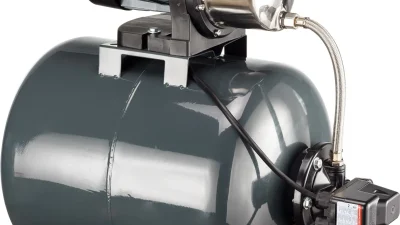Table of Contents
- Introduction
- Why Upsize Your Solar Battery Bank?
- Signs You Need More Backup Power
- Key Factors When Upsizing a Solar Battery Bank
- How to Calculate Your Battery Needs
- Choosing the Right Batteries to Expand
- Connecting More Batteries Safely and Effectively
- Upgrading Other Solar System Components
- Common Mistakes to Avoid When Expanding
- Conclusion
Introduction
Homeowners and businesses alike are seeking more reliable backup power solutions as power outages and electricity demands increase each year. One of the most effective ways to boost energy independence is to upsize your solar battery bank. But what does it mean to upsize, and how do you go about increasing your system’s capacity for more backup power? In this comprehensive guide, you’ll learn how to expand your solar battery bank, why it matters, what considerations to keep in mind, and exactly how to implement your upgrade for maximum benefit. Whether your goal is to run critical appliances for longer during outages or to transition further off grid, optimizing your battery bank is essential. Let’s explore how to ensure your solar system delivers the robust backup power you need.
Why Upsize Your Solar Battery Bank?
As solar energy adoption grows, more homeowners realize the importance of energy storage. The battery bank acts as the heart of your backup system storing the excess energy generated by your solar panels for use when sunlight is unavailable or the grid goes down. Upsizing your battery bank allows you to:
- Increase available backup power duration during outages
- Store more energy for cloudy days or nighttime use
- Support heavier electrical loads (such as more appliances or HVAC systems)
- Reduce grid reliance and potentially lower electricity costs
- Prepare for expanding future energy needs as your household or business grows
In short, a larger battery bank translates to more energy independence and resilience. For those living in areas prone to storms or grid instability, this upgrade becomes even more significant. It also addresses the growing desire among solar users to maximize their systems for both savings and security.
Signs You Need More Backup Power
Before making the investment, it’s important to determine if upsizing your battery bank is right for you. Here are common signs that your current backup system may not be meeting your needs:
- Your battery bank runs out of power before the end of a blackout
- You often need to limit appliance use during power outages
- Your energy consumption has increased (such as new family members, business equipment, or electric vehicles)
- You regularly experience long periods of poor solar generation (like winter months or heavily overcast regions)
- You want to add new loads to your backup system (like freezers, pumps, or heaters)
These scenarios make it clear that simply increasing solar panel capacity is not enough. Your battery storage must also be robust enough to match your lifestyle and resilience goals.
Key Factors When Upsizing a Solar Battery Bank
Expanding your battery bank is not just about adding more batteries. There are several crucial considerations to ensure safety, efficiency, and compatibility:
- System Voltage: Will you maintain your existing system voltage (12V, 24V, or 48V), or upgrade for improved performance?
- Battery Chemistry: Are you using lead acid, lithium ion, or another type? Mixing battery types and ages can cause problems.
- Charge Controller & Inverter Capacity: Can your existing components handle the increased storage capacity?
- Space and Ventilation: Is there enough room and airflow for the additional batteries?
- Wiring and Fusing: Will your current wiring safely accommodate the expanded bank?
Failing to address these points can lead to decreased performance, system inefficiency, or even safety hazards. Planning your expansion holistically ensures your system runs smoothly after the upgrade.
How to Calculate Your Battery Needs
Determining how much you need to upsize your solar battery bank requires a clear assessment of your backup power requirements. Follow these steps to calculate your ideal battery capacity:
- List Critical Loads: Write down all appliances and devices you want to power during an outage, including their wattages and expected hours of usage.
- Estimate Daily Consumption: Add up the watt hours (Wh) or kilowatt hours (kWh) for all equipment over a 24 hour period.
- Decide on Reserve Days: Determine how many days of backup power you want (most choose one to three days).
- Factor in Battery Efficiency: Solar batteries are not 100 percent efficient. Plan for roughly 85 percent efficiency for most modern batteries.
- Include Depth of Discharge (DoD): Do not plan to use 100 percent of your battery’s rated capacity. For example, lead acid batteries should not be discharged beyond 50 percent, while lithium batteries can usually go to 80 or 90 percent.
Sample Calculation:
- Your critical loads: 2,000 watt hours (2 kWh) per day
- You want two days of backup (4 kWh total)
- Plan for 85 percent efficiency and 80 percent DoD (for lithium ion batteries)
Batteries needed = (Total load) / (Efficiency x DoD)
Batteries needed = 4,000 Wh / (0.85 x 0.8) = 5,882 Wh, or about 6 kWh
This means your battery bank should have a usable capacity of at least 6 kWh. Adjust calculations to your own loads and reserve requirements.
Choosing the Right Batteries to Expand
If your current batteries are relatively new and healthy, you can often add more of the same type and brand into your existing bank. Here’s how to choose the right batteries for your solar system:
- Match Chemistry and Voltage: Never mix different battery chemistries (like lithium and lead acid) or voltages. This causes imbalanced charging and reduced performance.
- Age and Capacity: Install batteries of similar age and capacity, especially for lead acid types. Adding new batteries to old ones can shorten the lifespan of the entire bank.
- Scalability: Lithium batteries often offer easier expansion and deeper cycling ability than traditional lead acid types. Modular battery systems make expansion simpler and safer.
- Warranty and Reliability: Choose brands with solid customer support and warranty coverage. Investing in quality pays dividends over the years.
For significant expansions or when switching to a better battery technology (for example, going from flooded lead acid to lithium), it may be best to replace all batteries at once for reliable, long term performance.
Connecting More Batteries Safely and Effectively
Whether you are adding batteries in series (to increase voltage) or in parallel (to increase capacity), correct wiring is critical:
- Series Connections: Connecting batteries in series raises the system voltage while keeping amp hour capacity the same. Match voltage with your inverter and other components.
- Parallel Connections: Connecting in parallel keeps voltage stable but increases amp hour capacity for longer backup time. Use thick, short cables to minimize voltage drop and keep balance.
- Balanced Wiring: Use a busbar or evenly distributed cables to improve current distribution for all batteries. This helps each battery charge and discharge evenly, preserving lifespan.
- Proper Fusing: Install fuses or breakers on each battery string to protect against overcurrent and short circuits. Verify that your battery cables are properly size rated for the increased current.
Before making any changes, shut down the system safely and double check voltages to prevent accidental shorts. If you lack electrical experience, have a solar technician review or complete your installation for code compliance and safety.
Upgrading Other Solar System Components
Upsizing your battery bank often requires reviewing and possibly upgrading related solar system components to manage the increased load. Key components to check include:
- Charge Controller: Verify that your charge controller can handle the higher storage capacity and charging current needed. Oversized banks may require a larger unit or additional controllers in parallel.
- Inverter: Your inverter must be rated for the total peak and surge loads you want to run with your expanded battery bank. Higher capacity often means a more powerful inverter is needed.
- Wiring: Larger battery banks mean more current. Confirm that all cables and connectors are thick enough for safe current flow. Replace or upgrade cables if in doubt.
- Monitoring Equipment: Expanded systems benefit from battery monitors or smart battery management systems (BMS) to track state of charge, health, and cycle life.
- Structural Support: Ensure your floor or racking can support the extra weight, especially if using heavy lead acid batteries.
Neglecting component upgrades creates bottlenecks that can prevent you from realizing the full benefits of your new backup capacity and might increase safety risks.
Common Mistakes to Avoid When Expanding
Many solar owners make avoidable errors when expanding their battery storage. Here are frequent pitfalls and how to sidestep them:
- Mixing Different Battery Types: Always use batteries of matching chemistry, brand, capacity, and similar age for stability and uniform performance.
- Ignoring Depth of Discharge Limits: Exceeding recommended DoD, especially with lead acid batteries, shortens lifespan and effectiveness. Use a battery monitor to stay within safe ranges.
- Inadequate Ventilation: Lead acid batteries emit gases during charging and require proper venting. Lithium batteries need temperature control to prevent damage or fire risks.
- Improper Sizing: Both undersizing (too little capacity) and oversizing (excessive storage that rarely cycles) reduce cost effectiveness and performance.
- Poor Electrical Connections: Loose or corroded terminals, mismatched cables, and lack of proper fusing create safety hazards. Inspect and maintain connections regularly.
Careful planning and attention to detail help avoid these issues, maximize investment value, and provide the extra backup power you need.
Conclusion
Upsizing your solar battery bank for more backup power is a smart decision for anyone who values energy security, cost savings, and independence from the grid. By following the steps in this guide calculating your needs, choosing compatible batteries, upgrading components, and installing properly you can confidently expand your system for the reliable backup energy your household or business demands. Whether you are preparing for longer outages, adding new loads, or planning for the future, a thoughtfully upsized battery bank keeps your solar investment performing at its best. Start today by assessing your power needs, and enjoy the peace of mind that comes with a robust, resilient solar power system.





